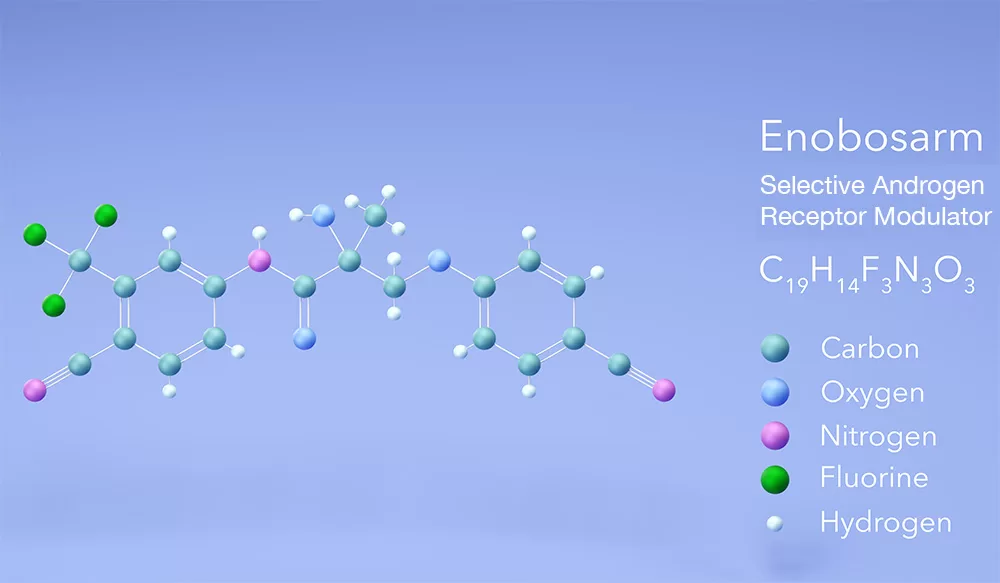Selective Androgen Receptor Modulators, popularly known as SARMs, have been the talk of the town in recent years, especially among bodybuilders and athletes. These drugs promise muscle growth, fat loss, and bone health improvement, but are they safe? Before jumping on the SARMs bandwagon, here’s what you need to know.
What are SARMs?
SARMs are a novel class of drugs that bind to the androgen receptor, a protein in the body that is responsible for regulating the development of male sexual characteristics. They were initially developed for medical conditions such as osteoporosis and muscle-wasting diseases. Their unique feature lies in their selective action – they target specific tissues like muscles and bones without affecting others. This selectivity is believed to reduce the risk of side effects commonly seen with traditional anabolic steroids.
Potential Benefits of SARMs
- Muscle Growth: One of the main attractions of SARMs is their ability to stimulate muscle growth without the unwanted side effects of steroids. They can potentially lead to increased muscle mass and strength in a relatively short period.
- Bone Health: SARMs have been researched for their potential to prevent bone loss and promote bone formation, which can be beneficial for conditions like osteoporosis.
- Fat Loss: Some studies suggest that SARMs might help reduce body fat, making them appealing for body recomposition.
- Reduced Side Effects: Due to their selective nature, SARMs might not result in the typical side effects associated with anabolic steroids such as liver damage or gynecomastia.
Risks and Concerns
- Limited Research: Although initial studies on SARMs are promising, much of the research is still in its early phases. The long-term effects and safety profile of SARMs are not fully understood.
- Possible Side Effects: While SARMs are believed to have fewer side effects than traditional steroids, they are not entirely free from risks. Some users have reported hair loss, liver toxicity, and reduced libido.
- Suppression of Natural Testosterone Production: Some SARMs might suppress the body’s natural production of testosterone, leading to potential issues like testicle shrinkage or infertility. Users often have to undergo a post-cycle therapy (PCT) to restore hormone levels.
- Legal and Sporting Implications: In many countries, the sale and use of SARMs for recreational purposes are illegal. They are also prohibited in most sporting organizations. Athletes might face bans or penalties if tested positive.
- Quality Concerns: The SARMs market is rife with low-quality products that might be adulterated or mislabeled. This poses potential health risks and makes it crucial for consumers to source from reputable suppliers.
Should You Take SARMs?
Before you consider taking SARMs, here are some essential factors to ponder:
- Consultation: Always consult with a healthcare professional. They can provide insight into the potential risks and benefits specific to your health condition and needs.
- Research: Ensure that you do thorough research. Understand the specific SARM you’re considering, its dosage, side effects, and recommended cycle length.
- Legality: Be aware of the legal implications in your country. Possession or sale of SARMs can result in severe penalties in some jurisdictions.
- Doping: If you’re a professional or amateur athlete, remember that using SARMs might result in disqualification or other penalties.
- Reputable Source: If you do decide to try SARMs, ensure that you are sourcing them from a reliable and trustworthy supplier to minimize health risks.
Conclusion
Selective Androgen Receptor Modulators are undoubtedly gaining traction in the world of fitness and bodybuilding. While their selective action promises reduced side effects, the complete safety profile and long-term implications remain unknown. Like any drug or supplement, SARMs come with potential risks. It’s vital to approach them with caution, arm yourself with knowledge, and seek professional advice. Your health and well-being should always be the top priority.
If you are interested in MALE PERFORMANCE TREATMENT OPTIONS, please visit the page in the link below, and or contact us at: (941) 203-8944 to set up your first consultation. For information on Special Offers for 1st Time Patients or Treatments, visit: Begin Your Transformation
Medical References:
- Dalton, J. T., Barnette, K. G., Bohl, C. E., Hancock, M. L., Rodriguez, D., Dodson, S. T., … & Narayanan, R. (2011). The selective androgen receptor modulator GTx-024 (enobosarm) improves lean body mass and physical function in healthy elderly men and postmenopausal women: results of a double-blind, placebo-controlled phase II trial. Journal of Cachexia, Sarcopenia and Muscle, 2(3), 153-161.
- This article looks into the potential benefits of enobosarm, a type of SARM, in elderly men and postmenopausal women.
- U.S. Food and Drug Administration (FDA).
- The FDA has released alerts and warnings about the risks associated with the use of SARMs. Check the FDA’s official site for their stance on SARMs and any related publications or alerts.
- World Anti-Doping Agency (WADA).
- WADA’s prohibited list details substances, including SARMs, banned in sports. Their official documentation provides clarity on their stance regarding these compounds.
- Basaria, S., Collins, L., Dillon, E. L., Orwoll, K., Storer, T. W., Miciek, R., … & Bhasin, S. (2013). The safety, pharmacokinetics, and effects of LGD-4033, a novel nonsteroidal oral, selective androgen receptor modulator, in healthy young men. The Journals of Gerontology: Series A, 68(1), 87-95.
- A study that dives into the safety and pharmacological properties of LGD-4033, another type of SARM.
For a comprehensive understanding or for more recent studies, it’s a good idea to consult databases such as PubMed.




